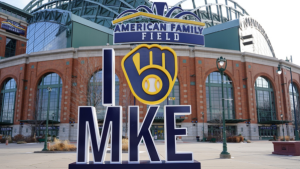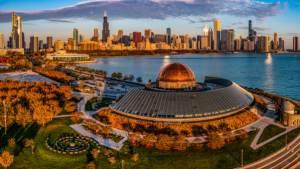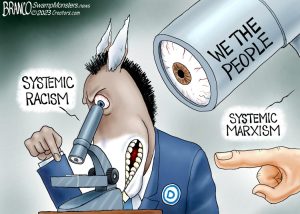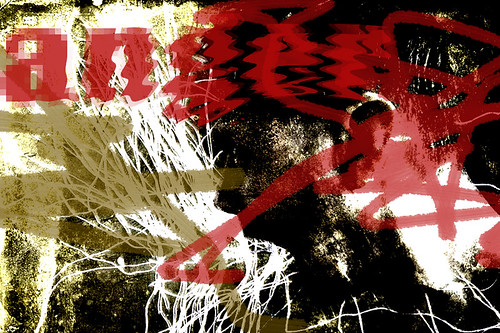Life, Liberty, Property #40: The roots of American anger could lie in a generalized hatred of others, says physician and political scientist Ronald W. Dworkin. (Commentary)
IN THIS ISSUE:
- The Roots of American Anger
- Wisconsin Beans the Taxpayers
- Blue City Blues
- Cartoon
SUBSCRIBE to Life, Liberty & Property (it’s free). Read previous issues.

The Roots of American Anger
I have long thought that the great sin of America is anger. Throughout our history, Americans have been regularly enraged with one another and felt fully justified in that feeling. For an American, it seems to me, anger is commonly not perceived as a shortcoming in oneself but as a justified response to other people’s faults.
I acknowledge that other nations have been subject to more-horrific violence than we, and that anger is a universal fact of human life. Regardless of one’s position on theological matters, it is clear to me that there are at least seven deadly sins—or perhaps you prefer to call them vices—and that they are indeed lethal.
We Americans tend to deny this reality. We like to characterize ourselves as optimistic, can-do people, even as our politics and culture have been typified by violent objections toward one another and a powerful belief that other people within our nation’s borders are holding us back. Witness the physical abuse and threats in Congress this very week.
This attitude—the sense that other Americans are impeding one’s pursuit of the full and uninterrupted happiness to which each of us is supposedly entitled—has become so commonplace that many Americans today reject the nation’s entire past as inherently corrupt and shameful.
Anger animates our politics, government policies, and culture. “In a Pew Research Center study conducted before the pandemic, Americans were more ideologically divided than any of the 19 other publics surveyed when asked how much trust they have in scientists and whether scientists make decisions solely based on facts,” the Pew Research Center reported in 2020. “These fissures have pervaded nearly every aspect of the public and policy response to the crisis over the course of the year.”
Pew quotes researchers Thomas Carothers and Andrew O’Donohue as stating the “powerful alignment of ideology, race, and religion renders America’s divisions unusually encompassing and profound. It is hard to find another example of polarization in the world that fuses all three major types of identity divisions in a similar way.”
What makes this particularly problematic is Americans’ tendency to justify their anger and hold on to it as if it were a virtue. Demonization of others perversely becomes a sign of righteousness.
One can see this disturbing social phenomenon in the support many Americans have shown for the slaughter of innocents committed by Hamas in Israel last month. Young Americans attending elite universities and large groups of people in cities across the United States—such as New York City (starting as soon as the attacks happened), Washington, D.C., Miami Beach, Minneapolis, Los Angeles (even outside the Museum of Tolerance, no less)—hit the streets to call for a ceasefire, which very often has taken the form of assertions that the government Israel is responsible for the atrocities committed against innocent Jews and retaliation against Hamas is wrong.
As just one among countless examples, students at Harvard University, probably the most influential academic institution in the nation and possibly the world, immediately and explicitly blamed Israel for the atrocities Hamas committed. Reuters reported,
A coalition of 34 Harvard students organizations said they “hold the Israeli regime entirely responsible for all unfolding violence” following decades of occupation, adding that “the apartheid regime is the only one to blame.”
The organizations signing the letter included Muslim and Palestinian support groups plus others named for a variety of backgrounds including the Harvard Jews for Liberation and the African American Resistance Organization.
Meanwhile, many young Americans are reevaluating the thinking of the mass murderer Osama Bin Laden, journalist Yashar Ali tweeted:
Over the past 24 hours, thousands of TikToks (at least) have been posted where people share how they just read Bin Laden’s infamous “Letter to America,” in which he explained why he attacked the United States.
The TikToks are from people of all ages, races, ethnicities, and backgrounds. Many of them say that reading the letter has opened their eyes, and they’ll never see geopolitical matters the same way again.
Many of them—and I have watched a lot—say it has made them re-evaluate their perspective on how what is often labeled as terrorism can be a legitimate form of resistance to a hostile power.
This is not limited to TikTok; similar videos have been posted on other social media platforms.
Writing at Law & Liberty, physician and political scientist Ronald W. Dworkin, M.D., Ph.D., explores the mindset behind these passions and traces their causes in our social fabric. Dworkin starts with a concise description of the phenomenon:
Many Americans were shocked to watch college campus groups defend Hamas’s killing of innocent Israeli civilians. What is life like for a person unable to say that beheading babies is evil, or who tries to qualify the event by “giving it context”? Most people can’t even imagine it. Such a person must have different feelings and different joys—his or her view of the world is not the same as ours and life doesn’t seem a very precious gift.
Dworkin then notes that there are varying motives or explanations for “their immorality,” such as being of Arab descent or having friends or relatives affected by the Arab-Israeli dispute. For these people, “immorality in condoning Hamas’s targeting of innocent civilians is horrible but comprehensible.”
Another and much larger population of students and other protestors should be far less likely to excuse terrorism, Dworkin observes. These “look to be Americans of European descent, well-nourished, and upper-middle class,” Dworkin writes. “They were probably not exposed to anti-Semitism growing up; nor did they have a family member killed or land confiscated during the Arab-Israeli wars. Yet now they wear the Palestinian keffiyeh around their necks and celebrate Hamas.”
Given the comfortable conditions in which they were raised, it is unclear why these people should want to explain away acts of horror perpetrated against other human beings, including infants. “Their path from playdates to shopping malls to virulent anti-Semitism and celebrating the purposeful slaughter of innocent civilians is as puzzling as it is artificial,” Dworkin writes.
The impulse behind this support for appalling acts of violence is neither the rebelliousness of youth nor an ideological passion for socialism. On the contrary, Dworkin identifies in these young people a generalized hatred of others that is continually looking for an outlet—an opponent on which to focus:
In contrast, some of the old American students not only do not know what they want, but do not even know exactly who they hate. They lack any power of distinction, or sense of proportion, by which to draw a line between justified violence and inhumanity, not because their hatred of Jews is so intense, as it is for some Arab-American students, but because they cannot stop their own thoughts of hate. They cannot return to normal. In this respect, they are more like anarchists than socialists or anti-Zionists. If the Arab-American students who celebrated the killing of innocent civilians are like the happy person who laughs, then the old Americans who celebrated the event are like the hysterical person who cannot stop laughing.
This mentality is more like nihilism than an ideology.
Multiple European countries initially banned pro-Palestinian gatherings in the immediate aftermath of the Hamas attack. With the easing of the bans, numerous demonstrations of support for Palestinians have arisen in the past couple of weeks. The nations of Europe, however, have much-larger proportions of Muslim residents than the United States, which suggests that the demonstrations do not reflect a generalized hatred as seems to be the case here.
Dworkin presents a pair of fascinating points of comparison for the American phenomenon: “the lone wolf killer and the radicalized knowledge worker.” These two vastly different types of people “share a common experience,” Dworkin notes. “Spending hours online, and with little to no contact with the object world, they both believe strongly in illusions, which inspires them to lash out—the radicalized knowledge worker through illiberal, intolerant, and violent anti-democratic action; the lone wolf killer through mass murder.”
The key point is that these types of people tend to live in a world of abstractions, unusually divorced from the messy realities of a life lived in the physical presence of other human beings. Technological change has made this an increasingly common way of life, especially in the most economically developed regions. Dworkin writes,
Other lone wolf killers have also spent an inordinate amount of time online. They gain insight into the world not by learning about life and people first-hand, but through an online study of images and symbols—through language. In the U.S., over half of the deadliest mass shootings in the last 100 years have occurred since 2014, when social media took off. [Eighteen-year-old mass killer Payton] Gendron sprinkled his pre-murder manifesto with abstract words such as “fascism,” “capitalism,” “nihilism,” “hedonism,” and “individualism,” in an effort to explain his thinking. As a teenager, he said he was committed to “communism,” then to “authoritarianism,” and later to “populism.” Connor Sturgeon, another lone wolf killer (and knowledge worker) who shot and killed five people in 2023, filled his manifesto with vague and ill-defined words from popular psychology, including “self-esteem,” “negative self-image,” and “self-improvement.”
All these words can exist without being connected to anything that does exist. They have no well-defined cognitive content. They lend themselves to illusion because a person can project his or her own desires, hate, and fears onto them. They can mean whatever the person says they mean.
The fact that most of the deadliest mass shootings of the past century have occurred since the rise of social media is an interesting and extraordinarily provocative observation. It is surely all too easy to blame social media for countless societal ills—especially if one has ever looked at any of it—yet this seems too plausible a connection to be a mere coincidence. Certainly, other factors have contributed to the rapid rise of such incidents. Even so, it is easy to see how the expanded ability to lock oneself away in isolation and exist within a sea of words could create an irresistible temptation for many people to neglect contact with other human beings and thereby reduce opportunities to see others’ humanity.
In such a world, Dworkin notes, other people become abstractions, and hence easier to hate and to see as not even deserving to live:
Urooj Rahman was a radicalized knowledge worker in her thirties. She threw a flaming gasoline-filled beer bottle into a New York City police car during the 2020 George Floyd riots. Tending toward the anarchic despite being a lawyer, she shouted, “I hope they burn everything down. Need to burn all police stations down and probably the courts too.”
Rahman spent much of her life amid abstract concepts. She spoke “the language of abolitionist Twitter,” one writer observed. She was “steeped in the language of social justice and racial politics.” Ill-defined terms such as “race,” “gender,” “LGBTQI,” and “environmentalism” seem to have shaped her crude perception of reality. Life for her became a theater in which her own little plot, built upon abstract words, was always being played.
The old American students who celebrated the purposeful killing of innocent Israeli civilians revealed a similar obsession with abstract words, constantly referring to phrases such as “colonialism,” “apartheid,” “humanitarian,” and “identity.” The words reflect the same creepy simplicity of mind that chills the blood.
Increasingly self-isolated from human contact and dwelling in rabbit holes of victimization narratives, what these people are really committed to is hatred itself. Dworkin writes,
Young people commit to causes for a variety of reasons. Some because they are idealistic. Some because they are bored. Some because they need a sense of purpose. But some because they are … very angry. [ellipsis in original]
For many old American students who supported the butchering of innocent civilians, anger cast about for a cause on which it could settle. Eventually, it found one. They then gave that cause special features and provided it with all the substance they needed to grow passionate about it. Using abstract words to frame it made it especially easy for them to connect that cause with other causes, thereby creating an illusory world that they colored with their own passions. Through their support of Hamas, they brought their anger to the level of the real.
The widespread embrace of anger indicates why our current political divide has taken on pathological proportions. It is normal, of course, for our individual conditions to rise and fall over time and for our happiness and sense of the rightness of things to vary accordingly. In the United States, however, our very freedoms undermine an important excuse for bad fortune: lack of opportunity. Hence it is tempting to look for scapegoats if one is frustrated at the conditions of one’s life.
In addition, and of great importance, Americans have long been taught to hate their countrymen and their past. For decades, our government-run public schools have been teaching children that our country is fundamentally flawed and even illegitimate. The nation’s culture has taken up that theme and greatly expanded its reach. This invites the conclusion that those who have done well in this country have benefitted from unfair advantages.
We hear that notion everywhere today, as Americans widely imagine malevolence from others as the explanation for their problems. For increasing numbers of us, someone other than I must be at fault for my conditions. Feminism, Critical Race Theory, Marxism, identity politics, intersectionality, social justice theories, anticolonialism, sexuality politics, transgenderism, radical environmentalism, and other explanations for or complaints about unequal life conditions provide the rationale—and identify the enemy.
Perfect happiness, however, is not what our nation’s founders promised, and it is not what our founding documents established. America is a process, not a product. In the United States, equality describes our status as individuals before our government: we are equal under the law, and whatever we make of that is up to us.
The solution to our polarization and political pathologies is to teach our children—and, alas, our adults—that self-evident truth. America’s unique endowment for each of us is the pursuit of happiness, not its attainment.
Our greatness as a nation is not based on material goods or fleeting pleasures. Our greatness is in our aspirations and ideals, bequeathed to us many years ago by people far wiser than ourselves. Let us become wise again, like them, and embrace those ideals—and one another.
Sources: Reuters; Law & Liberty; Pew Research

Wisconsin Beans the Taxpayers
Cities’ competition for major sports teams has intensified in the past few months. The latest agreement to transfer an enormous amount of money from taxpayers to billionaires is a deal to keep the Brewers Major League Baseball team in Milwaukee, Wisconsin.
The current lease between the team and the stadium was due to run out in the year 2030. Both the Brewers and the state government treated the seven-year deadline as strangely urgent. “Right now, our lease runs until 2030, and … it’s toward the late innings of making sure we’ll be here until 2050, and that’s our sole focus,” team owner Mark Attanasio said in October, Front Office Sports reported.
The big loser is the taxpayer, as always.
The state of Wisconsin and the city and county of Milwaukee will spend just over $500 million on improvements to the 22-year-old American Family Field in Milwaukee. The Brewers will kick in $150 million, some of it as rent payments. The Brewers will sign a 20-year lease that will last through the year 2050.
That’s $25 million of taxpayer money per year. This will pay for so-called upgrades and repairs.
The stadium was originally financed in part through a sales tax that expired three years ago. Subtract that from the $150 million the Brewers are “contributing,” plus interest.
The Wisconsin legislature approved the fleecing of the state’s taxpayers on Tuesday. Gov. Tony Evans indicated he will sign it, having been a strong proponent of the plan and deeply involved in the negotiations from the outset.
As is the standard procedure in concocting these deals, the Brewers threatened to leave Milwaukee altogether, with Nashville, Tennessee being named as a potential destination, during the months of talks with the state government. In October, as state lawmakers and the team approached an agreement, Attanasio said he had never considered leaving Milwaukee.
If we suppose, for a moment, that Attanasio was telling the truth about that, the real target of the threat to leave can be seen clearly: not the state government negotiators but the press and the taxpayers, to whip up public support for the plan.
As is always the case in these taxpayer-finance schemes, the team claimed that having major league baseball in town is a moneymaking proposition. “From every measurement, the Brewers bring to the state economy well more than what it’s looking like we need for funding for the next generation,” Brewers Business Operations President Rick Schlesinger told local TV station FOX 11.
The Brewers official did not offer any evidence of that, of course. In a previous story, FOX 11 had reported, “Numerous economic studies have shown that public stadium financing is a bad deal for many communities.” In fact, The Heartland Institute has reported, “According to a 2017 poll, 83 percent of the economists surveyed agreed that, ‘Providing state and local subsidies to build stadiums for professional sports teams is likely to cost the relevant taxpayers more than any local economic benefits that are generated.’”
The Wisconsin legislature has big Republican majorities in both houses, and Gov. Evans is a Democrat.
As always, robbing the taxpayers is the real goal of bipartisanship.
Source: Front Office Sports
 Blue City Blues
Blue City Blues
One might well wonder whether enormous investments in entertainment by state and local governments are downright irrational at this point. University of Toronto data shows people are avoiding public places in major U.S. cities, especially those that have been under Democrat rule for many years, Fox Business Channel reports:
Cities run by Democratic mayors, including Cincinnati, Ohio; Houston, Texas; Raleigh, North Carolina; Chicago, Illinois; Portland, Oregon; Columbus, Ohio; Seattle, Washington; Minneapolis, Minnesota; Louisville, Kentucky; and St. Louis, Missouri, all rank in the bottom 10 of 66 metropolitan areas that have seen the least amount of foot traffic recovery since 2019, according to data from the University of Toronto. …
Other major players, like New York City, have only seen 66% of foot traffic recovery. Philadelphia ranks 49th at 67% recovery; San Francisco 48th at 67%; and St. Louis saw the lowest foot traffic recovery at 53%. …
“It’s almost all of these big blue cities. It’s San Francisco, it’s Oakland, it’s Minneapolis. It’s my home city of Chicago,” economist Stephen Moore said on Varney & Co. Monday. “These numbers are really distressing.”
This exodus is entirely a result of bad policy decisions in recent years, Moore told the outlet:
“Why is that? I think it’s because of the fact that … the carjackings, the crime, the fact that you have these high taxes in these areas,” the economist explained. “By the way, when you have fewer people going into the cities, think about the impact that has on the stores, the restaurants and so on.”
On the other hand, Las Vegas, Nevada—which has an independent mayor—was the only city to see a positive post-COVID recovery with a foot traffic rate of 103%.
People are fleeing blue cities for red states, as is now well-known and has even been noted in the clueless New York Times. The out-migration and avoidance of public places is costing these left-wing cities a huge amount of money, Moore notes. “It shows that there’s about one-third less economic activity in the downtown area of these cities,” Moore told Fox Business News.
An excellent article by Michael Snyder at The End of the American Dream blog provides a vivid picture of what is going on in America’s cities and why people are leaving:
It isn’t just your imagination. We really are witnessing a full-blown societal meltdown. … In the United States today, there are millions upon millions of people that are completely and utterly lawless. We really have become a “Mad Max society”, and the future of our country is going to be exceedingly bleak if we continue going down this road.
Snyder then provides “10 examples from 10 different cities of the ‘Mad Max’ environment that now reigns in America’s streets.” Ax-wielding carjackers, a daytime jewel robbery in the middle of a freeway, unconscious addicts “sprawled across the road for hundreds of yards,” an MMA fighter attacked in his car by “a knife-wielding assailant,” immigrants fleeing unaffordable cities and returning to their poverty-stricken home countries, toilet paper in locked cases in retail stores, and other conditions I hope you never imagined you would see in America.
Can we turn this around? Of course we can! Our cities declined to this state because of awful decisions by their leaders. These places can be restored to greatness if we choose.
That is something for which to be thankful.
Have a happy Thanksgiving. Next week is a bye week for Life, Liberty, Property, though of course we’ll be monitoring the world of public policy on your behalf and reporting again soon. See you in two weeks.
Sources: Fox Business Channel; The End of the American Dream

via Comically Incorrect
For more great content from Budget & Tax News.











